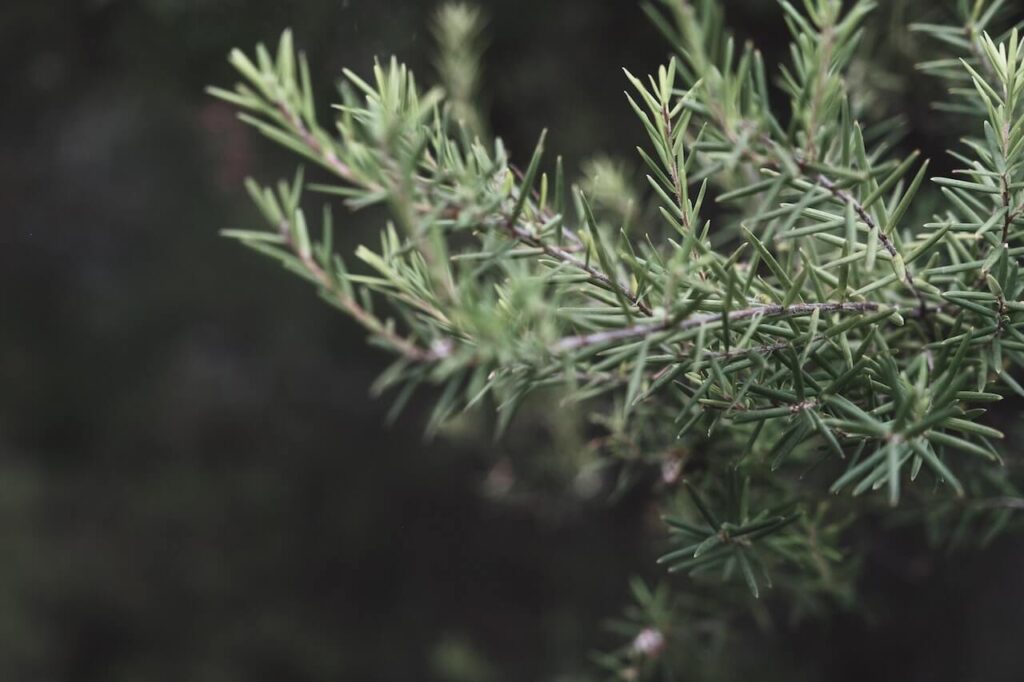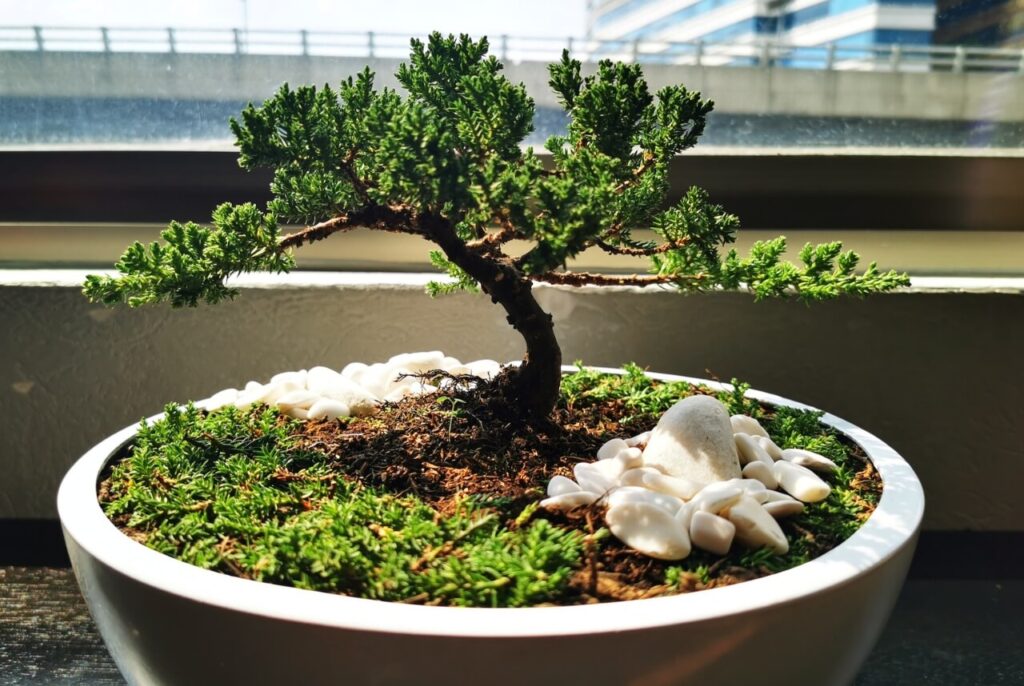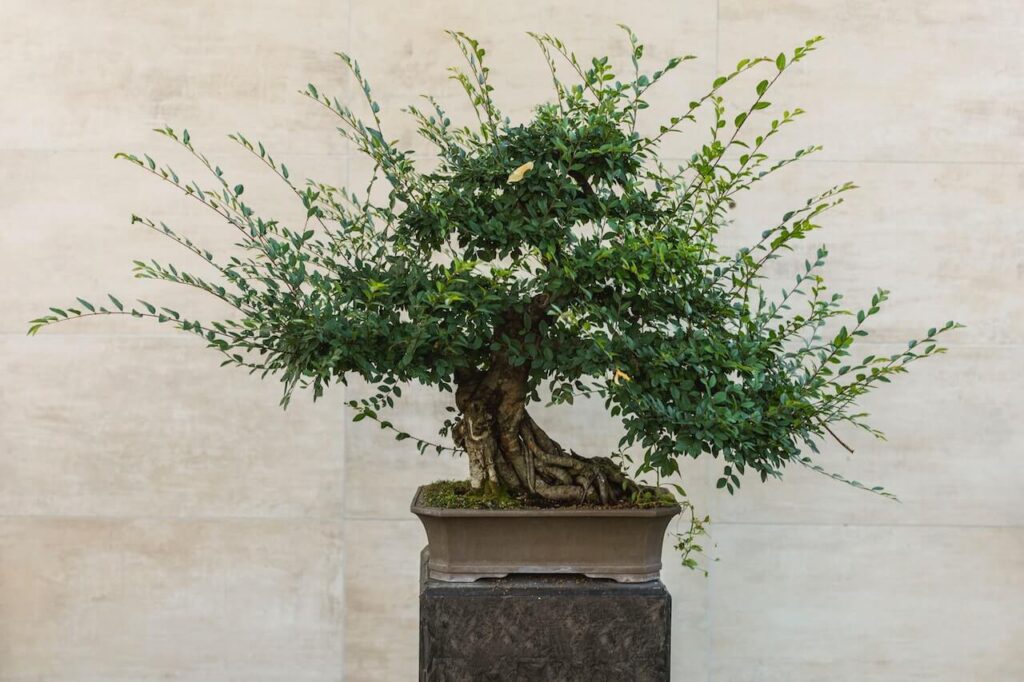For generations, bonsai cultivation has captivated enthusiasts. The intrigue comes not only from careful nurturing and patience but also from a deep understanding of the specific tree species. It’s like embarking on a fascinating journey—a guide to exploring the diverse bonsai tree species.
In this blog post, we’ll embark on a fascinating journey with our guide to bonsai tree species, exploring the diverse range of these miniature trees and their vital role in the artful and practical aspects of bonsai cultivation.
We’ll cover:
- The most popular bonsai tree species and the unique traits that set each one apart.
- How different bonsai species shape the care and maintenance techniques used.
- The charm and challenges of unique bonsai tree varieties.
- Helpful pointers on choosing the right bonsai tree species that best fits your environment and skill level.
An Overview of Bonsai Species
Juniper

The Juniper Bonsai is a favorite among bonsai tree species. It’s easy to care for, which makes it popular. Its needle-like leaves have a simple beauty. The rugged bark adds a rustic touch wherever it’s placed. This bonsai adapts well to different environments, so it’s great for beginner bonsai growers. This forgiving tree needs some sunlight, regular water, and frequent pruning to keep its shape.
Ficus
The Ficus Bonsai, often referred to as the “weeping fig,” is cherished for its tender, vibrant green leaves and its knack for thriving in indoor environments. This low maintenance bonsai tree offers a versatile canvas for various styles, from casual upright forms to more structured ones. These bonsai trees favor a well-lit spot with indirect sunlight and consistent watering, with a preference for the soil to dry out in between watering sessions.
Chinese Elm Bonsai
The Chinese Elm, also known as the “lacebark elm,” is a remarkable tree species that boasts a distinctive bark pattern that exudes regal elegance. It does well in outdoor settings with ample sun exposure and moderate watering. This tree species is stunning when grown in a multi-trunk style, thereby accentuating its unique visual appeal.
Japanese Maple
Japanese Maples, Acer palmatum, are a bonsai lover’s delight with its dynamic colors and unique leaves. These deciduous hardwood trees dance with the seasons, shedding their leaves in tune with nature. Nourish your Japanese maple with daily water during the growth period and well-draining, nutrient-rich soil. Despite the resilience of Japanese maple trees, they can be sensitive to aphids and scale when stressed. With patience and care, Japanese Maples will blossom into captivating works of art.
Azalea
The Azalea Bonsai is renowned for its colorful and vibrant blooms that burst forth in a spectacular blaze of color. It enjoys partial sunlight and requires frequent watering to maintain its moisture levels. Azalea Bonsais also require regular pruning to ensure that they bloom beautifully each year.
Boxwood
The Boxwood Bonsai, adored for its rich leaves and adaptability to various styles, flourishes in the sun and shade. Regular watering helps maintain its perfect moisture balance.
Bald Cypress
The Bald Cypress Bonsai Tree is one of the more unique-looking bonsai tree species, boasting an unusual root structure that is striking when grown in a water basin. They prefer partial sunlight and moderate watering, making them an excellent choice for beginners.
With this guide to bonsai tree species, we’ve explored a variety of trees each with their unique characteristics and care needs. Understanding these differences is crucial for successful bonsai cultivation.
Care and Maintenance based on Bonsai Species
Watering Requirements
Watering holds a crucial spot in the care routine of a bonsai tree. Yet, it’s important to note that each bonsai tree species comes with its own unique set of watering needs.
For example, Juniper tree species prefer moderate watering, preferring to dry slightly between watering.
Chinese Elm bonsai trees thrive best in a balanced environment. They simply cannot tolerate extended periods of dryness or unending moisture.
The common mistake by beginner bonsai enthusiasts is overwatering their trees which can lead to root rot. It is crucial to do detailed research on the specific tree species to obtain the correct watering schedule.

Soil and Fertilizer Preferences
Each species has unique soil and nutrient needs.
For instance, the Fukien Tea tree prefers a well-draining yet moisture-retaining blend of Akadama, humus, and pumice due to its sensitivity to drought and excess wetness.
Azalea bonsai trees, on the other hand, require specialized azalea or rhododendron fertilizer during their growing season due to their distinct nutritional requirements.
Understanding and catering to these needs is essential for successful bonsai care.
Light and Temperature Needs
Bonsai tree species each have unique preferences when it comes to light and temperature.
For instance, the Juniper Bonsai is quite the sun-lover and doesn’t shy away from high temperatures. On the other hand, the Tokyo Cypress Bonsai prefers a cooler lifestyle, needing shelter from the intense heat of the sun.
The amount of light and temperature influences bonsai growth and survival. It is essential to provide the correct light and temperature conditions that suit the tree species.
Pruning and Wiring Techniques
Pruning and wiring are necessary activities in bonsai care and maintenance, especially when creating very dramatic bonsai styles. The goal of pruning and wiring is to ensure that the tree species’ growth stays miniature.
Species of different trees require specific techniques that suit their growth patterns.
For instance, when it comes to wiring techniques, the narrow and supple branches of a conifer bonsai species require a different technique from that used in broadleaf bonsai species.
Research on pruning and wiring techniques that suit different bonsai species is essential for bonsai care maintenance.
Seasonal Care
Caring for bonsai involves adjusting routines based on the changing seasons.
As spring arrives and buds begin to form, it’s key to shower your bonsai with proper watering and fertilization.
In the heat of summer, the focus shifts to ensuring they receive an optimal balance of sunlight to keep away any heat-induced harm.
When fall colors start to show, it’s the perfect moment to repot your bonsai, prepping them for winter’s chill.
Once winter sets in, special precautions need to be taken to protect these miniature wonders from frost damage.
Create a schedule to maintain the bonsai properly and provide customized seasonal care for its best health.
Unique Bonsai Tree Varieties
As part of our guide to bonsai tree species, let’s delve into the distinct varieties of bonsai plants and get to grips with the interesting challenges tied to their growth.
Indoor Bonsai Trees
Indoor bonsai trees are perfect for people who live in apartments or lacking space for outdoor gardening.
Numerous tree species make for lovely indoor bonsai, with Ficus and Chinese Elm being two sought-after varieties.
Ficus is a breeze to grow, making it a superb choice for those just starting their bonsai journey. The Chinese Elm bonsai, while requiring a bit more effort, rewards the diligent with its sturdy nature and stunning presence, making it a delightful addition to your living space.
Outdoor Bonsai Trees
Growing bonsai trees outdoors is the classic approach to this art form.
For instance, the artful practice of nurturing pomegranate bonsai trees, predominantly an outdoor bonsai species, has been a cherished tradition in Japan for numerous generations. Thanks to the historic Silk Route, these captivating tree species found their way to the Far East, enriching the bonsai culture with their unique charm and beauty.
There’s a wide array of tree species suitable for outdoor miniature tree cultivation, from evergreens like the mountain pine tree to deciduous trees such as Maple and Oak. Outdoor bonsai trees do demand a bit more upkeep compared to their indoor counterparts.
They thrive with ample sunlight, efficient drainage, and the right balance of watering and fertilization.
However, the beauty of an outdoor bonsai is unmatched. The natural wind, sunshine, and rainfall simply provide an aura of verdure that pales any scene an indoor bonsai can offer.
Challenging Bonsai Species to Cultivate
Certain bonsai species, though difficult to cultivate, offer unparalleled beauty and distinctive aura.
Consider the Japanese flowering cherry trees, buttonwood, and cedar trees (e.g., Cyprus cedar, Himalayan cedar evergreen conifers). Cultivating these particular species calls for an elevated degree of care, patience, and expertise. Yet, their allure and elegance make every effort worthwhile.
Numerous online platforms provide a broad selection of these challenging yet rewarding bonsai trees. Before purchasing, it’s crucial to delve into comprehensive research about their care requirements (both indoors and outdoors) to ensure your success in nurturing them.
A Guide to Choosing the Perfect Species of Bonsai

Assess Your Environment
Kickstarting your bonsai journey begins with understanding your environment.
If you’re dealing with limited light or dry conditions, species such as Juniper bonsai trees or Ficus might be the right fit. They’re robust and can weather low light and parched surroundings.
On the other hand, if you’re blessed with abundant natural light, then a Japanese Maple could be your ideal bonsai companion.
Consider Your Skill Level
Choosing a bonsai species? Consider your plant-care prowess.
For beginners, the low-maintenance Jade or Ponytail Palm trees, requiring just occasional pruning and watering, are great starters.
For bonsai aficionados, challenging species like the Bald Cypress or Oak may be enticing. They require more care, but the result is a stunning bonsai that’s sure to steal the show.
Choose the Right Size
Bonsai trees span a diverse range of sizes, from modest desktop varieties to grand outdoor showpieces. When deciding on the size of your bonsai tree, factor in its intended display location and the space you have at your disposal.
If you’re limited on space, then a small desktop tree like the Dwarf Jade plant may be more suitable.
However, if you have a large garden or outdoor space, then a larger species like Pine Trees or Junipers may be more appropriate.
Research the Species
Before you make your final choice, immerse yourself in a comprehensive guide to bonsai tree species. Familiarize yourself with their specific care needs, growth tendencies, and distinctive features. This will guide you in making an educated decision and ensure the prosperity of your bonsai tree in its new home.
Studying the species in detail also aids you in determining if it aligns well with your environment and your gardening expertise.
Purchase from a Reputable Dealer
After you’ve pinpointed a species that checks all your boxes, proceed to acquire your bonsai tree from a trustworthy source.
This guarantees that you’re bringing home a vibrant tree that has enjoyed attentive care and nurturing.
Reputable dealers can also provide you with expert advice on caring for your tree, which can be incredibly helpful, especially for beginners.
Conclusion: Embracing the Bonsai Journey

Bonsai care is indeed a fascinating journey filled with discovery and fulfillment. With each species offering its unique charm and distinct care requirements, the journey becomes an enriching learning experience.
Whether you’re drawn to the popular juniper bonsai tree or the challenging cedar bonsai tree, understanding your bonsai tree species is key to successful cultivation. From their watering needs to their seasonal care, every detail matters in this intricate art form.
If you’re keen to journey further into the mesmerizing realm of bonsai, our website serves as a wealth of information. It offers an extensive guide to bonsai tree species and practical care tips. What’s more, you can find useful resources like a handpicked list of insightful bonsai books and a showcase of the world’s most stunning bonsai gardens for your inspiration.





0 Comments